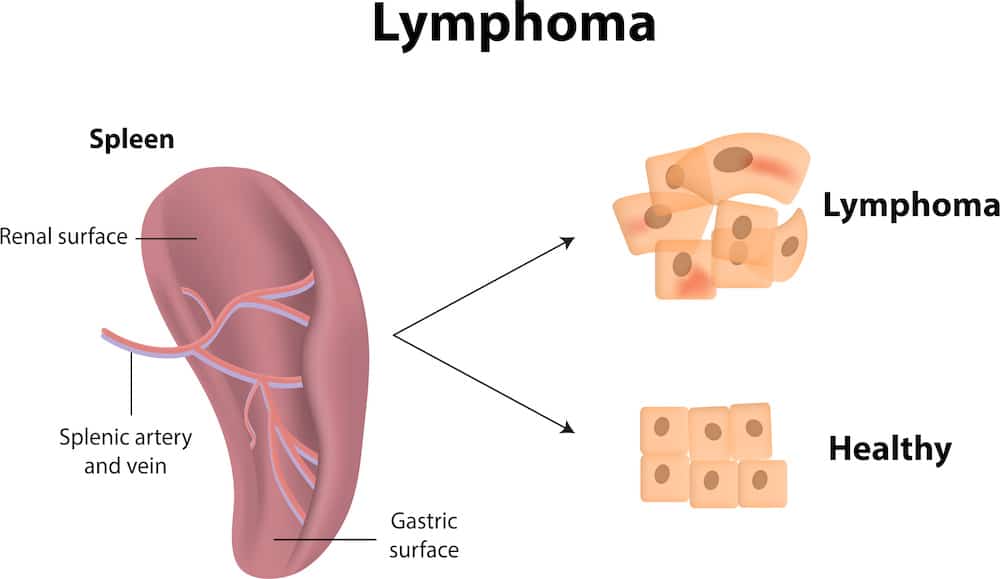We often think of cancer as a hard nodule that forms in an organ. For example, lumps in the breast tissue or abnormal growth in the liver. This type of cancer is known as solid cancer, and it is perhaps the most common but not the only type. There’s another type of cancer affecting non-solid tissues such as the blood cells, especially white blood cells.
Leukemia and lymphoma are tumors affecting the bone marrow and the lymphatic system, respectively. They sometimes cause what we traditionally know as a tumor, but other times they behave differently from what we expect.
In this article, we’re covering the topic of lymphoma from a very wide perspective. After reading, you will understand what it is, the types of lymphoma, and what is different about them. You will also learn about its causes, how it is detected, and what to do about it.
Lymphoma cancer overview

Lymphoma is the name given to a heterogeneous group of cancers that develop in the lymphatic and reticuloendothelial systems. The lymphatic system includes the lymph nodes and lymphatic vessels. The reticuloendothelial system includes white blood cells such as macrophages and monocytes, which clear the body from toxins and particles by engulfing and destroying them. The most common lymphoma types are Hodgkin and Non-Hodgkin lymphoma, but there are many others, including more than 30 categories, types, and subtypes.
For many years, doctors believed that lymphomas were different from leukemias because the former develops in the lymphatic system, and the latter is caused by alterations in the bone marrow. That is what traditionally happens and one of the distinctions between lymphoma and leukemia. However, it is not always true, and lymphoma can sometimes have characteristics usually attributed to leukemia. Thus, in some patients, the distinction between lymphoma and leukemia can be vague.
You can find lymphoma by other names, especially lymphocytic cancer or lymphatic cancer. This is the name because lymphoma involves lymphocytes, a type of white blood cell. These cells usually work to protect the body against infection, and we have two types of lymphocytes for that: B lymphocytes, which produce antibodies that detect and destroy pathogens, and T lymphocytes, which kill bacteria directly and without intermediates. B or T cells can be transformed into lymphoma, and they usually grow and collect in lymph nodes throughout the body or in the spleen. Thus, we can see tissue growths, traditionally associated with the lymphatic tissue, until cancer spreads to other parts of the body.
